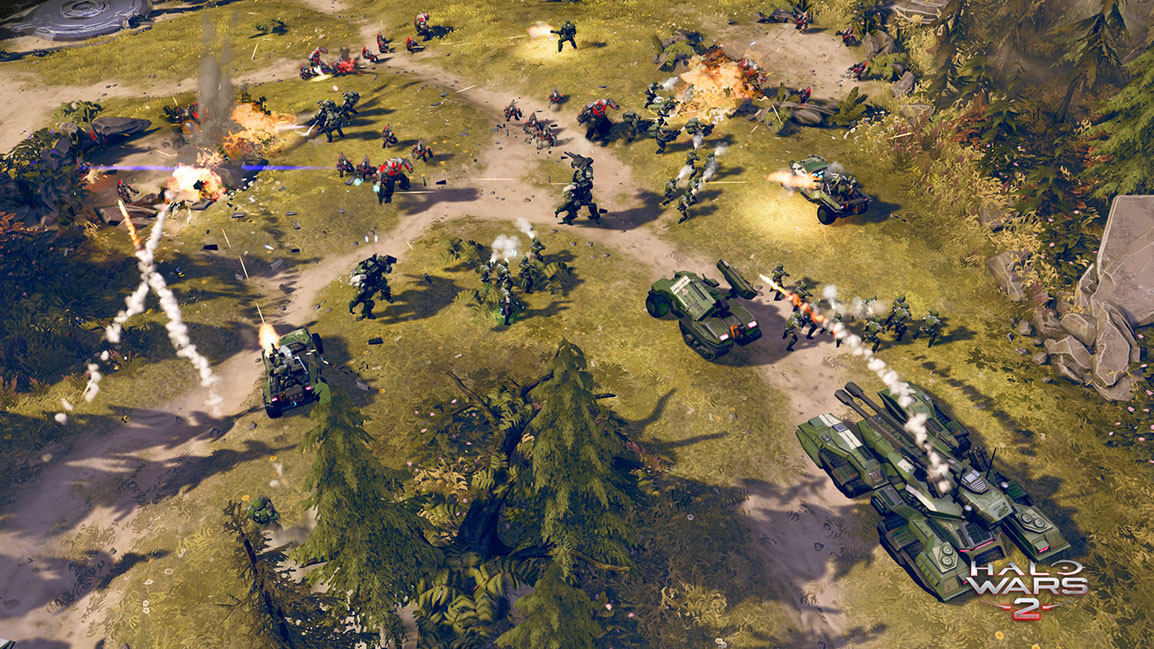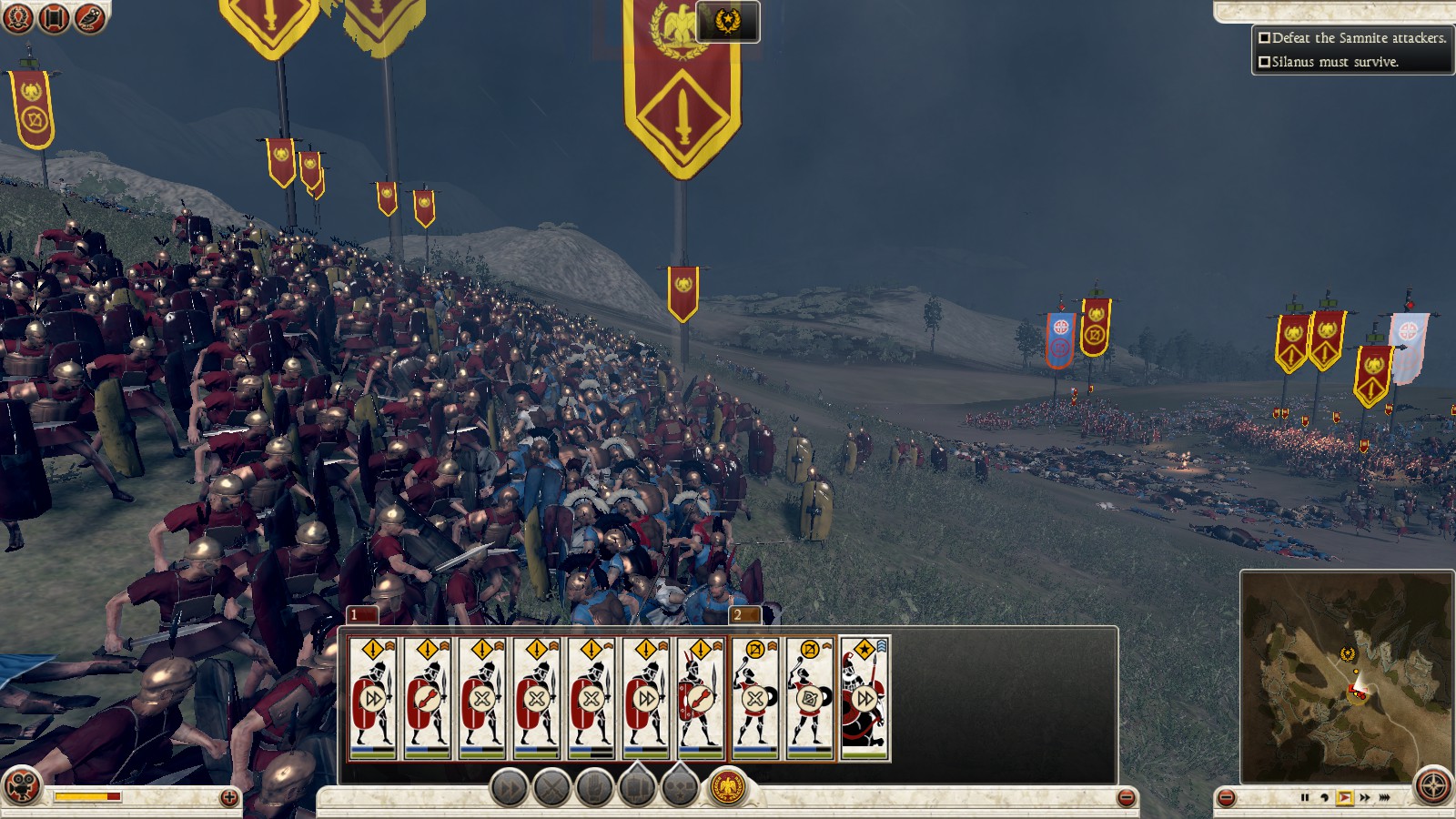
Hang around on Reddit or YouTube comments for long enough, and you’ll see accusations that modern RTS games have been ruined by esports, that they have become little more than “clickfests.” Firstly, it’s an odd accusation given that real-time is the point of real-time strategy games, but I find the claim to be a lazy, unfounded red herring and here I’ll be debunking it.
Let’s start by defining our terms, what is esports? An esport is a competitive multiplayer video game that has tournaments with large viewerships and prize pools. A vast skill ceiling and depth is required for a game to develop a competitive scene, while interesting moment-to-moment gameplay is needed for large viewership. In essence, becoming an esport is the consequence of good game design. It can be awkward when developers try to force their games as esports artificially, but they should design games with the necessary substance and product features to support the organic growth of a competitive scene.

Where I think the contention lies is in the assumption that to create interesting moment-to-moment gameplay, the game needs to be fast-paced. But interesting gameplay doesn’t just mean always having action, exciting gameplay can be the branching of build orders and strategies found in StarCraft 2. Watching one player delay upgrades for mass units will frame that match with tension because now one player is on a pressure timer to justify the aggression. Gameplay decisions need to have meaningful consequences for it to be engaging to watch. Esports also has other considerations such as game length, visual clarity and inclusion of mirror matchups.
When players criticise the APM (Actions Per Minute) requirements of StarCraft, they claim it is a fault of the game. They’re asserting it’s too fast for the casual players to enjoy and that strategy is neglected in favour of mechanics. Ironically, a requirement of APM adds to the strategic depth because APM then becomes a resource, like any other, that needs to spent carefully. It’s fine to only have 60 APM in Silver League, so long as you’re investing that APM on things that matter like Probes & Pylons rather than microing drops. Everytime you lose a game on ladder, it’s probably not because your opponent was faster than you, it’s because they were better at StarCraft in its totality. For the majority of players in low leagues like Silver, getting crushed by an opponent’s twitchy APM is just a fiction. The matchmaking works, those high APM players are in Diamond and above.

The mechanical difficulty and fast pace of StarCraft isn’t for everyone, but the good news is there’s an entire market of other RTS games out there. RTS isn’t just StarCraft 2, yet people often speak as if it is representative of the whole genre. There might be a case for esports ruining RTS if all attempted to emulate StarCraft 2, but that simply isn’t the case. Despite by far being the most popular, WarCraft 3, StarCraft 2 and Age of Empires are the only major RTS games that require a high APM to play, and they’re all old games now. There’s an entire subgenre of large-scale RTS such as Supreme Commander that deemphasise micromanagement and remove the need for APM due to the scale and automation. Offworld Trading Company has a similar effect but through a different approach, it’s a unique RTS with no units, only market manipulation on the fly. I can’t see how accusations of “twitchy esports” and “MOBA’ification” can be made when the majority of recent RTS games are nothing like StarCraft 2. For better or for worse, most modern RTS games seem to be emulating the Command & Conquer formula. 8-Bit Armies is as simple an RTS as there will ever be.
RTS players like RTS mechanics. I don’t understand the fascination with hating the real-time element of real-time strategy; it’s the entire point of the genre. Turn-based strategies exist, and they are immensely popular. There are entire genres and franchises designed to cater to people who enjoy strategy games at a gentle pace such as the Civilizations and Total War. Meanwhile, every RTS has the ability to simply play large team games or co-op vs AI to throw away the stress associated with competitive 1v1. Ironically, the co-op mode in StarCraft 2 has now made it the best introduction for new players to RTS multiplayer, despite also having the most difficult PvP multiplayer.

Here’s what actually ruined RTS: market realities resulting in shrinking budgets, competition with free-to-play games, lack of compatibility with consoles, MOBA’s taking some of the market share, stagnation of CPU power, engine limitations, lack of engaging team experiences, and competition with legacy RTS in a way that other genres don’t. Ultimately, the decline of RTS is a complex, multivariate problem. Many RTS enthusiasts don’t seem to understand that RTS is a niche genre and it’s not incompetence on the part of developers resulting in fans not getting the games they want. There are ways RTS can try to climb back to relevancy, but “going back to old-school” isn’t the solution.
People have nostalgia for the classic RTS games, but frankly, the old RTS games aren’t good by modern standards. When RTS enthusiasts think back to the classic RTS from their childhood, their nostalgia glasses blind them to the broken pathfinding and non-functioning counter systems. Those old-school RTS are raised to levels they don’t deserve because it’s associated with reminiscing about all those LAN parties and the fun you use to have with your friends as a teenager. Command & Conquer 3 is a much better game than Tiberium Sun, and WarCraft 3 is not even comparable to WarCraft 2. EA recently announced plans to remaster the original Command & Conquer and Red Alert, but it’s going to be a challenge to make those games and their campaigns fun to play in 2019.

Sometimes people criticise how modern RTS games develop strict “metas” where only a small sample of strategies is viable. Metas only matter in high-level play, where the skill of the players is so great that tiny mistakes are punished. For the majority of players, however, abiding by a strict meta is unnecessary, there are so many ways that novice players can improve their play that blaming their loss on not abiding by the meta is just an excuse and a distraction. Regardless, the concept of a limited meta is inherently a balance problem, which old-school RTS games suffer from far more than modern RTS games. On top of being from an era where counter-systems wasn’t an understood art, old-school RTS didn’t have patching and balance updates in the way we expect and demand today. Old games would have had way worse metas if they were played in competitive ladders and tournaments.
The decline of RTS is a complex problem and scapegoating it on esports or MOBAs is just a red herring. I would urge fans of old-school RTS who view the genre as having been ruined by “twitchy esports gameplay” to look further than StarCraft 2. StarCraft 2 is not all of RTS, it is, however, by far the most popular despite having that type of gameplay. Play some turn-based strategy if real-time isn’t your jam, or look for the many RTS that doesn’t require fast APM. While RTS is sadly in a state of a decline, there’s still a large variety of RTS games that would appeal to many different fans. I hope old-school RTS fans become more willing to explore the genre as there’s a lot of great RTS games out there in 2018.











